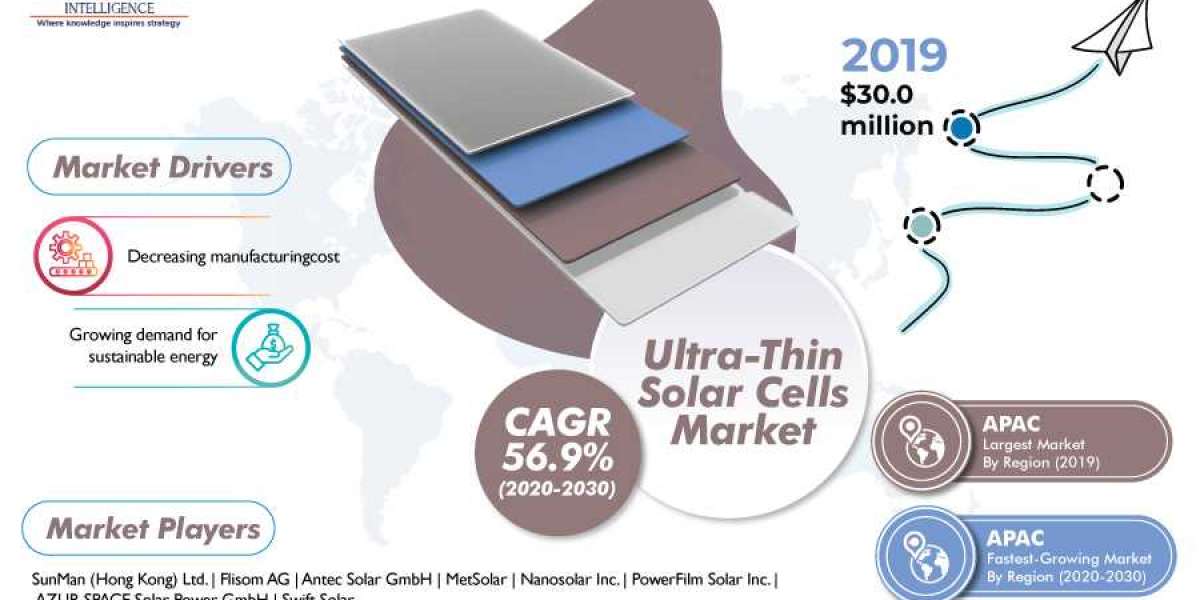The adoption of renewable energy sources, such as solar energy, has increased significantly over the past few years, which can be ascribed to the rapid decline of fossil fuels and decreasing cost of the technology. While the levelized cost of energy (LCoE) of photovoltaic (PV) panels is less than that of other renewable energy sources, it is still higher than traditional sources. As per the International Energy Agency, the LCoE for coal and PV panels will be equal by 2024 and will be $40.0 per MWh for PVs and $57.3 per MWh for coal by 2040.
Attributed to this decline in the price of solar energy, its demand will increase as well, including the demand for ultra-thin solar cells. As per a report by PS Intelligence, the global ultra-thin solar cells market generated a revenue of $30.0 million in 2019, and it is predicted to advance at a 56.9% CAGR during the forecast period (2020–2030). Different ultra-thin solar cell technologies are gallium arsenide (GaAs), cadmium telluride (CdTe) copper indium gallium diselenide (CIGS). Out of these, the demand for CdTe was the highest in the past and the situation is expected to remain the same in the coming years as well.
Get a sample copy of this research: https://www.psmarketresearch.com/market-analysis/ultra-thin-solar-cells-market/report-sample
This is due to the fact that, on the basis of power generation efficiency and cost, CdTe is the only current technology that rivals crystalline silicone PV cells technology. In addition to this, the other ultra-thin solar cells technologies are still going through the testing phase, owing to which their utilization is limited to test projects and laboratories. The two types of ultra-thin solar cells in terms of grid types are off-grid and on-grid, between which, the demand for on-grid cells was higher in the past.
This is because the grid connectivity around the globe, except for some underdeveloped and developing countries, is good and on-grid technology provides several advantages over the off-grid technology. In these systems, the electricity grid works as a battery and help in situations where users need external power. As opposed to this, off-grid systems only have the ability to run on energy produced from sunlight. Different applications of ultra-thin solar cells are building-mounted, aerospace, and automotive, among which, the demand for these devices was the highest for building-mounted application in the past.
This can be ascribed to the fact that these power generating devices are extensively installed on residential and commercial units. These PV cells are increasingly suited for roofs that cannot bear much weight, which is why, ultra-thin solar cells are being widely integrated in buildings. Geographically, Asia-Pacific is expected to emerge as the largest ultra-thin solar cells market in the years to come, which is owing to the fact that PV panel manufacturers in the region are increasingly engaging in research development for improving their efficiency and reducing their purchase cost.
In conclusion, the demand for ultra-thin solar cells is increasing because of the decreasing cost of solar energy and need for generating clean energy.








